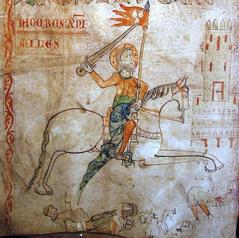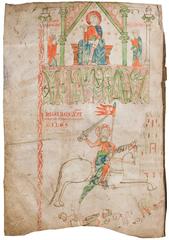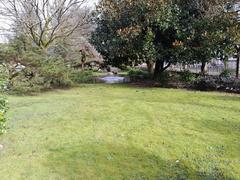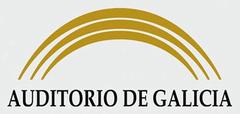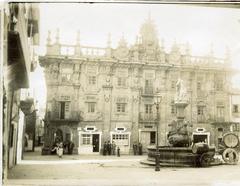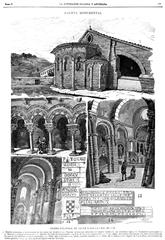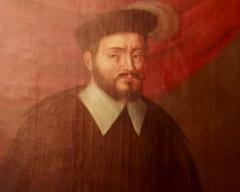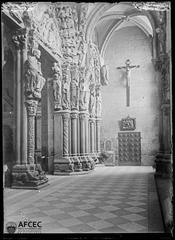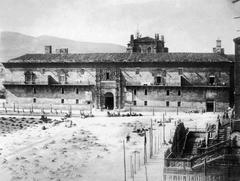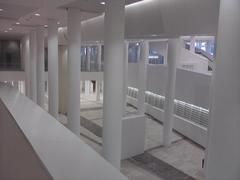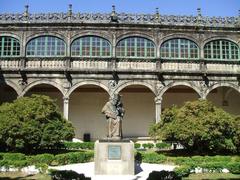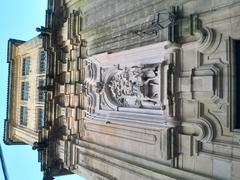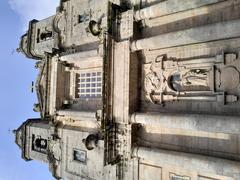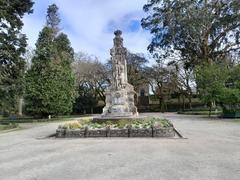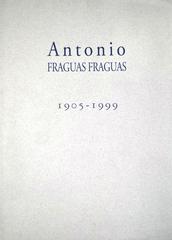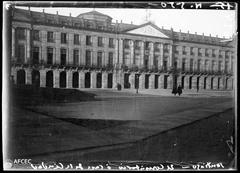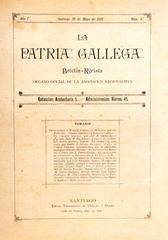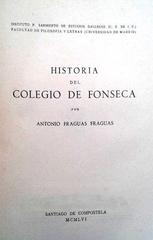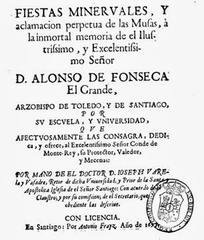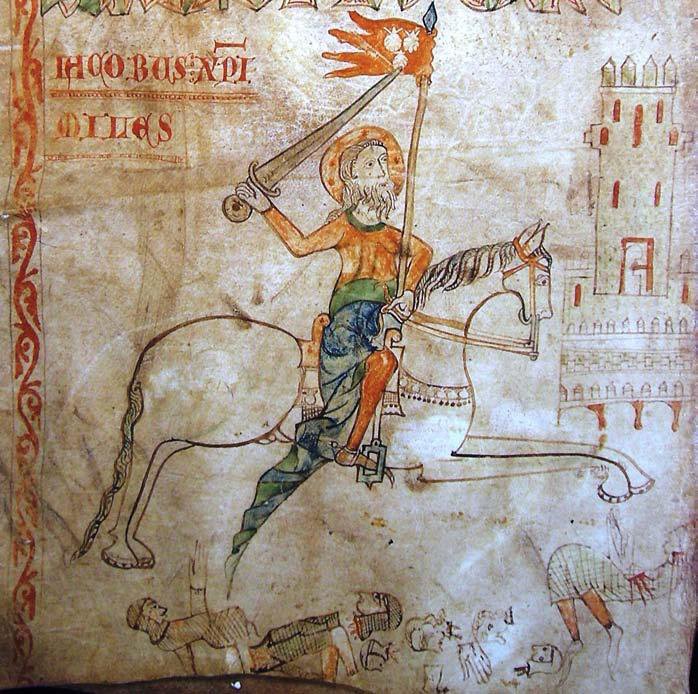
Castle Da Rocha Forte: Complete Visitor Guide, Hours, Tickets, and Santiago de Compostela Historical Sites
Date: 14/06/2025
Introduction
Nestled just southwest of Santiago de Compostela’s historic center, Castle Da Rocha Forte (Castelo da Rocha Forte or Rochaforte) stands as one of Galicia’s most evocative medieval landmarks. Constructed in the 13th century by Archbishop Xoán Arias, this fortress served both as a military bastion safeguarding the southern approaches to Santiago and as a symbol of ecclesiastical power over the Terras de Compostela. Today, its imposing granite ruins offer visitors a tangible connection to Galicia’s turbulent medieval history, marked by power struggles, social revolts like the Irmandiño uprisings, and the evolution of Santiago as a pilgrimage hub.
Castle Da Rocha Forte also controlled key pilgrimage routes, notably the Camino Portugués, serving as a checkpoint for pilgrims and merchants while witnessing pivotal episodes, including its destruction during the Gran Guerra Irmandiña in 1467. Recent archaeological research has revived its narrative, making it a must-see for history enthusiasts and travelers alike. This guide provides essential information on visiting hours, ticketing, accessibility, travel tips, and nearby attractions, ensuring a rewarding experience for all visitors.
For up-to-date information, consult the Santiago de Compostela Tourism website and the Rocha Forte official site.
Table of Contents
- Introduction
- Historical Overview
- Visitor Information
- Nearby Attractions
- Frequently Asked Questions (FAQ)
- Conclusion & Final Tips
- References
Historical Overview
Origins and Construction
Castle Da Rocha Forte was erected around 1240 under the initiative of Archbishop Xoán Arias, serving as a defensive gateway south of Santiago de Compostela. Its earliest documentary reference dates to 1253, confirming its strategic and administrative significance. The fortress was built on a low-lying site near the confluence of the Sar and Vilar rivers, controlling major routes into the city (Wikipedia).
Architectural Features and Expansion
The castle was renowned for its concentric defensive walls and a central keep (torre del homenaje). In the early 14th century, Archbishop Berenguel de Landoira oversaw significant expansions, including additional towers and deep moats. Archaeological discoveries reveal sophisticated military architecture, such as circular tower bases and vaulted ceilings, illustrating advanced construction techniques adapted to the Galician landscape (Historical Research Source).
Political Power and Symbolism
For centuries, Castle Da Rocha Forte symbolized the secular authority of the archbishops over Santiago and its territories. The castle functioned as the administrative, fiscal, and military seat of the lordship (señorío) of Santiago, with its walls serving as a backdrop to dramatic events, such as the 1320 execution of local citizens (Wikipedia).
The Irmandiño Revolts and Destruction
The 15th-century Irmandiño revolts, a popular uprising against feudal oppression, saw the castle besieged and ultimately destroyed in 1467. Over 11,000 people reportedly participated in its demolition, and it was never rebuilt. Stones from the ruined fortress were repurposed in the construction of other city monuments, including the Santiago Cathedral.
Rediscovery and Archaeological Work
After centuries of decline, the site was partially forgotten until archaeological excavations beginning in the early 2000s revealed its full extent. These investigations have unearthed defensive structures, towers, and moats, enhancing understanding of medieval fortification in Galicia. The site is now protected as a cultural heritage monument, with interpretive panels and guided tours available (rochaforte.santiagodecompostela.gal).
Visitor Information
Visiting Hours & Tickets
- Spring & Summer (April–September): 9:00 AM – 7:00 PM
- Autumn & Winter (October–March): 9:00 AM – 5:00 PM
- Closed on major holidays and during certain special events; check official site for updates.
Admission:
- Entry is free for all visitors.
- Guided tours are also free but require advance registration via the official tourism portal.
Accessibility
The site features marked paths and interpretive signage in multiple languages. While the terrain is mostly flat, some uneven surfaces and stonework remain due to the castle’s archaeological nature. Partial accessibility is provided, but visitors with limited mobility should contact organizers in advance for specific accommodations.
Getting There & Travel Tips
- By Foot: 30-minute walk south from Santiago’s old town.
- By Public Transport: Local buses serve the Conxo neighborhood; check schedules beforehand.
- By Car: Limited parking available near the site.
- Route: Located on the historic road between Santiago and Padrón, part of the Camino Portugués.
Tips:
- Wear comfortable, sturdy footwear.
- Bring water and snacks; no on-site refreshment facilities.
- Early morning or late afternoon visits offer optimal lighting and fewer crowds.
Guided Tours & Special Events
- Guided Tours: Free, expert-led tours in Spanish, Galician, and occasionally English. Advance booking required via rochaforte.santiagodecompostela.gal.
- Special Events: Medieval reenactments, educational workshops, and cultural festivals occur throughout the year. Check the official programs for dates.
Facilities & Photography Tips
- Facilities: No restrooms or cafés on-site. Nearest amenities are in Conxo or Santiago’s city center.
- Photography: Best at golden hour (early morning or late afternoon). Drones generally require prior authorization.
Nearby Attractions
- Santiago de Compostela Cathedral: The iconic pilgrimage destination.
- Monastery of San Martín Pinario: One of Spain’s largest monasteries.
- Parque de la Alameda: Offers panoramic city views.
- Castriño de Conxo: Nearby archaeological site with Bronze Age remains and petroglyphs.
- Old Town/City Walls: UNESCO World Heritage Site, ideal for combining historical itineraries.
Frequently Asked Questions (FAQ)
Q: Is entry to Castle Da Rocha Forte free?
A: Yes, both general entry and guided tours are free; guided tours require advance registration.
Q: Are guided tours available in English?
A: Most are in Spanish and Galician, but occasional English-language tours are offered.
Q: Is the site accessible for visitors with limited mobility?
A: The main paths are accessible, but some uneven terrain and ruins may pose challenges. Contact the site for specific information.
Q: Are there restrooms or cafés on-site?
A: No; use facilities in the Conxo neighborhood or Santiago center.
Q: Can I combine the visit with other tours?
A: Yes, the city offers combined routes, sometimes with free shuttle service to the city walls.
Q: Are there special events at the castle?
A: Yes, workshops, exhibitions, and cultural events are organized throughout the year.
Conclusion & Final Tips
Castle Da Rocha Forte is a captivating destination for anyone interested in Galician history, medieval architecture, and the evolution of Santiago de Compostela. Its ruins stand as a testament to centuries of social conflict and resilience, serving as both a symbol of power and a site of collective memory. With free admission, engaging guided tours, and accessible travel options, it’s an essential stop on any historical or cultural itinerary in Santiago.
Plan ahead: Confirm visiting hours, register for guided tours, and prepare for limited on-site facilities. Combine your visit with nearby sites for a comprehensive historical experience. For the latest updates, event schedules, and resources, visit the Santiago de Compostela Tourism site and the Rocha Forte information portal.
Enhance your visit: Download the Audiala app for digital guides, interactive tours, and exclusive content on Santiago’s historical sites.
References
- Wikipedia: Castillo de la Rocha Forte
- Official Santiago de Compostela Tourism
- Rocha Forte official site
- Visitas guiadas oficiales
- Historical Research Source
- Spain.info – Castle Da Rocha Forte
- Top Historical Sites in Santiago de Compostela
